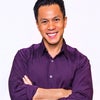I don't see many people like me in the media. I am gay and a racial minority (and, oh yeah, an immigrant to the U.S.). When I turn on the TV, go to a movie or read the news, I rarely see any LGBT racial minority stars. That's why it was so powerful in October when HuffPost Gay Voices published a list of " The Most Influential LGBT Asian Icons." Luminaries like George Takei and Margaret Cho headlined the crop of 54 gaysians. Somehow, my name managed to make the roster. But the greater honor was what happened next: After seeing me on the list, two young gay Asians sought me out for advice. That reminded me of why the world needs more LGBT racial minorities as role models.
Growing up in the 1970s and 1980s, I saw no gay role models, let alone LGBT Asian icons. Today we live in a time when LGBT people have rising prominence in media, the arts, politics, business and other fields. But most gay and lesbian celebrities are white: Ellen DeGeneres, Elton John, Suze Orman, Neil Patrick Harris and Anderson Cooper. Fictional gay characters also tend to be Caucasian: The entire main cast of gays and lesbians from Queer as Folk, Will and Jack on Will & Grace, and couple Cameron and Mitchell on Modern Family. We're so appreciative of this rising gay prominence that it's easy to forget those representations do not reflect the full racial diversity of the LGBT community. (Of course, it's doubly challenging to get cast for media projects if a performer is a racial minority and gay.)
Beyond the entertainment and media world, the story is similar. In politics and business, gay and lesbian leaders are predominantly Caucasian. Sadly, this is even true within our own LGBT nonprofit groups. In 2008 only 4 percent of executive directors of LGBT organizations were people of color; that figure comes from the Pipeline Project, a group formed to develop LGBT leaders who reflect our multicultural, multiethnic community. It is a far cry from the 36 percent of the U.S. population who self-identify as a racial minority.
Celebrities, icons and leaders are important. They inspire and influence people of all ages -- especially young minds. Certainly, LGBT youth of any race can be inspired by Barney Frank and Rachel Maddow. But it is a simple human truth that seeing a successful person who looks like you can provide even more powerful inspiration.
Two young men reminded me of this lesson after The Huffington Post published its list of influential LGBT Asians. First, in early November, I got the following email from a young man in Southern California. (He asked me not to identify his real name, so I'll call him "Peter.")
Dear Jimmy,
I was immediately touched because I was once that guy -- young, gay, closeted, Vietnamese and unsure of how to come out to parents from "old school" Asia.
I composed a long response to Peter, empathizing how Vietnamese culture, language barriers and parental expectations may make it extra-difficult to come out. I explained that I waited far too long, until my 30s, to tell my own parents. I also revealed what I learned: By not giving my parents enough credit, I cheated myself out of a closer relationship with them than years of being the academic golden boy ever created.
Peter thanked me and even asked for some career advice, because he'd just graduated from college. He then posted my entire response on his anonymous blog so that other people could see my advice. Peter does not yet have enough confidence to come out to his parents, but I hope he does soon.
More recently, a 22-year-old gay man in Indonesia emailed me. (I'll call him "Tom.") Tom wrote that he feels isolated, with no friends, and he has not come out to anyone. He asked, "What does real life mean if there is no one you love?" and wondered, "Will I get my true love someday?"
My heart broke when reading this plea for help -- because Tom's challenges as a gay man in Indonesia will likely be even more difficult than if he lived in the U.S. While I could not guarantee that he would find true love anytime soon, I gave Tom much of the same advice that I gave to Peter in Southern California. Most of all I encouraged him to come out to trusted friends and family when he felt it was safe.
As much as I was trying to give advice, I also learned something valuable: Visibility of LGBT racial minorities matters. Those two young gay Asian men tracked me down across email cyberspace because they saw me on The Huffington Post list. While they could have sought advice from anyone, I could speak to them with added credibility because I share their Asian background. For every Peter and Tom, how many more gay Asian youngsters out there want help from an Asian mentor? And how many LGBT people from other racial groups want role models who look like them?
That's why the world needs more LGBT racial minority role models. Every day, gay and lesbian people of color are ascending in their professional fields. We need to support their continuing efforts to break through historic ceilings. When they succeed, we need to give them greater visibility. Media outlets can help by more frequently recognizing achievements made by LGBT racial minorities.
As a kid, I saw a media landscape devoid of any gays or lesbians, and certainly no LGBT racial minorities. For today's youngsters, whether they live in Southern California or Indonesia, I hope their view will become far more colorful.
